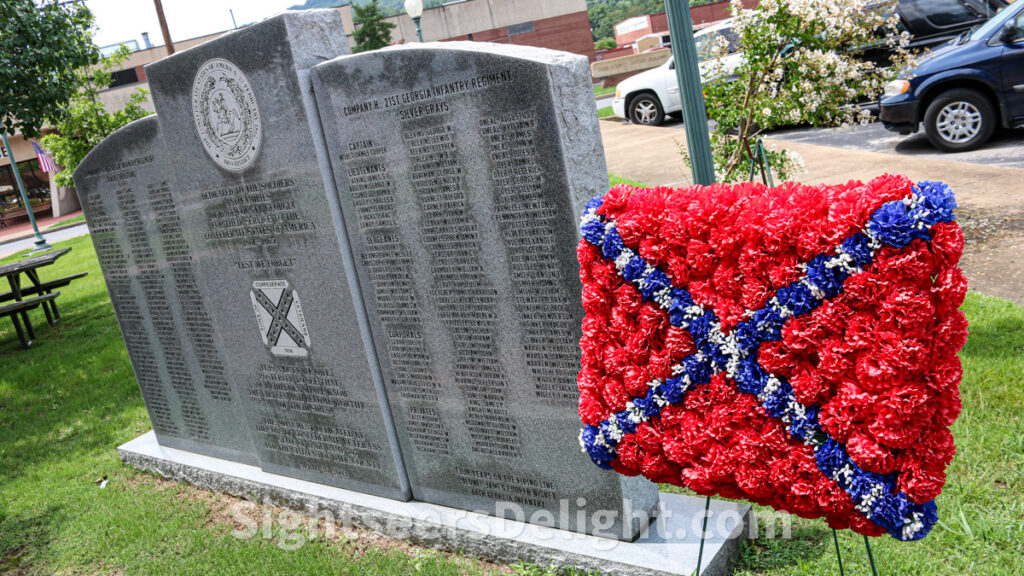ATLANTA — A famous Confederate landmark in Georgia is the latest battleground in an ongoing fight about the role monuments to the Confederacy play in today’s society.
Officials at Stone Mountain Park, which boasts a massive carving honoring the Confederacy, want to erect a monument to Martin Luther King Jr., according to a newspaper report. The monument would be located atop the mountain, presumably mere feet from where the Ku Klux Klan reformed in in 1915.
According to The Atlanta Journal-Constitution, the monument would feature an elevated tower with a replica of the Liberty Bell in reference to a line from King’s 1963 “I Have a Dream” speech: “Let freedom ring from Stone Mountain of Georgia.” The monument has the backing of Georgia Gov. Nathan Deal, a Republican.
However, a few uncertainties remain. For example, King’s heirs own the the copyright to King’s words and speeches and will likely have to approve their use in a state landmark. Civil rights groups appear to be lukewarm to the idea as long as the Confederate carving remains.
And, Georgia law mandates Stone Mountain as a Confederate memorial. Confederate heritage groups look as though they’ll vigorously contest any plans for a monument.
But, the debate is part of a larger dialogue.
There are thousands of monuments to the Confederacy scattered across the country, many in Southern states. But, in the wake of a national debate over the use of the Confederate battle flag and the role of Confederate symbols in modern society, what happens to these monuments?
Is it prudent — or even possible — to remove monuments from grounds? Should they remain in place to serve as a centerpiece for dialogue? Isn’t removing monuments from the public landscape tantamount to rewriting history?
There is, seemingly, no one-size-fits-all approach.
“Each community will address its commemorative landscape in different ways,” said Stephanie Yuhl, professor of history at the College of the Holy Cross and author of “A Golden Haze of Memory: The Making of Historic Charleston.” “Many societies have had to confront the question of how to deal with monuments and symbols from a previous regime because they can become potent symbols around which dissenters rally.”
“In the contemporary U.S., there are so many voices calling for recognition, rightfully, that the addition of monuments to the latest civil rights cause is one way forward,” Yuhl said. “Some might argue that this would clutter the landscape beyond real meaning. Others that the cost would be better spent toward serious social justice issues.”
Dr. Charles Gallagher, chair of the sociology department at La Salle University in Philadelphia, believes many monuments will eventually fade from the public spotlight.
“What is already happening is that the outward wearing of Confederate Flag clothing or accessories is stigmatized; fashion wear that suggests racism will make the wearer a pariah,” said Gallagher, who studies race and ethnicity.
“Confederate Monuments are a bit more complicated but many will come down, and there will be proposals to change (streets named) after Confederate heroes,” Gallagher added. “There will be major, symbolic Custer’s Last Stand battles over monuments, but the tributes will start to disappear as changing demographics and a loss of memory erase them from public history.”
But, to Jill Ogline Titus, associate director of Gettysburg College’s Civil War Institute, monuments provide an opportunity to educate about the past.
“The choices confronting us are not as stark as ‘do nothing’ or ‘tear down all the Confederate monuments,’” she said. “Monuments are powerful teaching tools. They are windows into the period in which they were dedicated. Destroying these memorials would erase important evidence of the way that history has been marshaled to justify inequality and police racial lines.
“Removing monuments would also rob us of an opportunity to understand the multi-faceted interpretations and motivations of previous generations and discuss history in all its complexity and contradiction,” Ogline Titus added.
